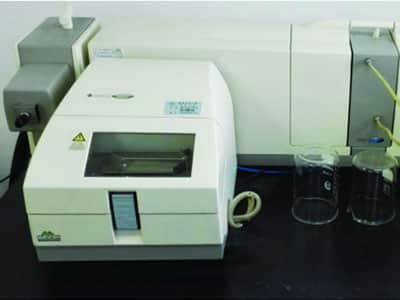

The Mastersizer uses laser diffraction techniques to measure the size of particles. These could be suspensions of solid particles, emulsion droplets, or even dry powders.
The control and understanding of particle size and size distribution are key in understanding both physical and chemical properties. Measuring particle size distributions and understanding how they affect the products and processes can be critical for the success of many manufacturing businesses.
Particle size and size distribution have a direct influence on material properties such as reaction rate, dissolution rate, packing density, product appearance, sedimentation, and texture.
Our range of particle size analyzers use different measuring principles and cover a size range from 0.3 nm to >3 mm.
The Mastersizer uses the principles of static light scattering (SLS) and Mie theory to calculate the size of particles in a sample. The basic principle is those small particles will scatter light at large angles and large particles will scatter light at small angles, as shown in the diagram on the right. The scattering pattern produced by the sample is recorded and by applying Mie scattering theory the distribution of particle sizes can be calculated.
The technique of laser diffraction particle sizing enables us to measure the size distribution of emulsion droplets. This data obtained aids in the selection of appropriate emulsifiers to control droplet size and distribution.
